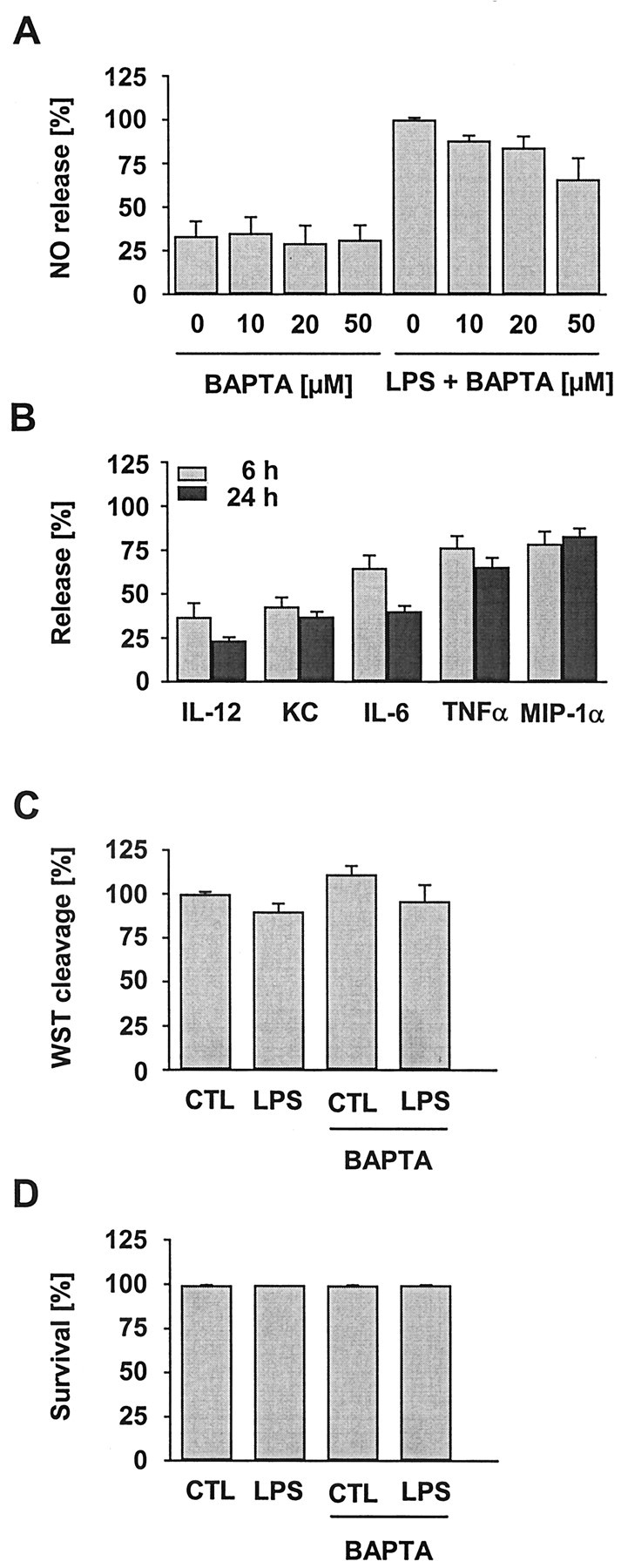Figure 5.

Effect of intracellular Ca 2+ chelation on the basal and LPS-induced release of NO and cytokines–chemokines, as well as on cell viability. Microglial cultures were treated with varying concentrations of BAPTA AM in the absence or presence of LPS (100 ng/ml, 24 hr). A, NO release measured as nitrite accumulation in the culture supernatant was determined and expressed as percentage of the amount obtained from LPS treatment only. BAPTA reduced the LPS-induced NO production. Data are the mean ± SEM from at least three independent experiments performed in triplicate. B, Cytokine and chemokine release in LPS-activated microglial cultures in the presence of BAPTA (50 μm). Release values were determined as of 6 and 24 hr and expressed as percentage of the respective value obtained from LPS treatment only. BAPTA presence had a rather variable influence on individual factors, showing moderate to marked reduction. Data are the mean ± SEM from three experiments (n = 36 per group). C, Effect of BAPTA (50 μm, 24 hr) on the cleavage of WST-1 by mitochondrial enzymes in control (CTL) and LPS-treated microglia. Data are the mean ± SEM from six experiments (n = 69 per group). D, Effect of BAPTA (50 μm, 24 hr) on the survival of control and LPS-treated microglia as determined by a life–death staining assay. Data are the mean ± SEM from three experiments run in duplicate. No BAPTA-related difference was detected by either of the vitality assays.
